Photo Shoot
The long strange story of how the bus ended up being photographed for Wired
After shining up the bus in Rocky Bayou we headed back over to Fort Pickens where we were scheduled to meet up with a photographer who was shooting the bus for an article I wrote for Wired magazine. Both Wired and I wanted us to be out west for the photo shoot, but that didn’t happen. Fort Pickens is the most wide open place in this area, it would have to do.
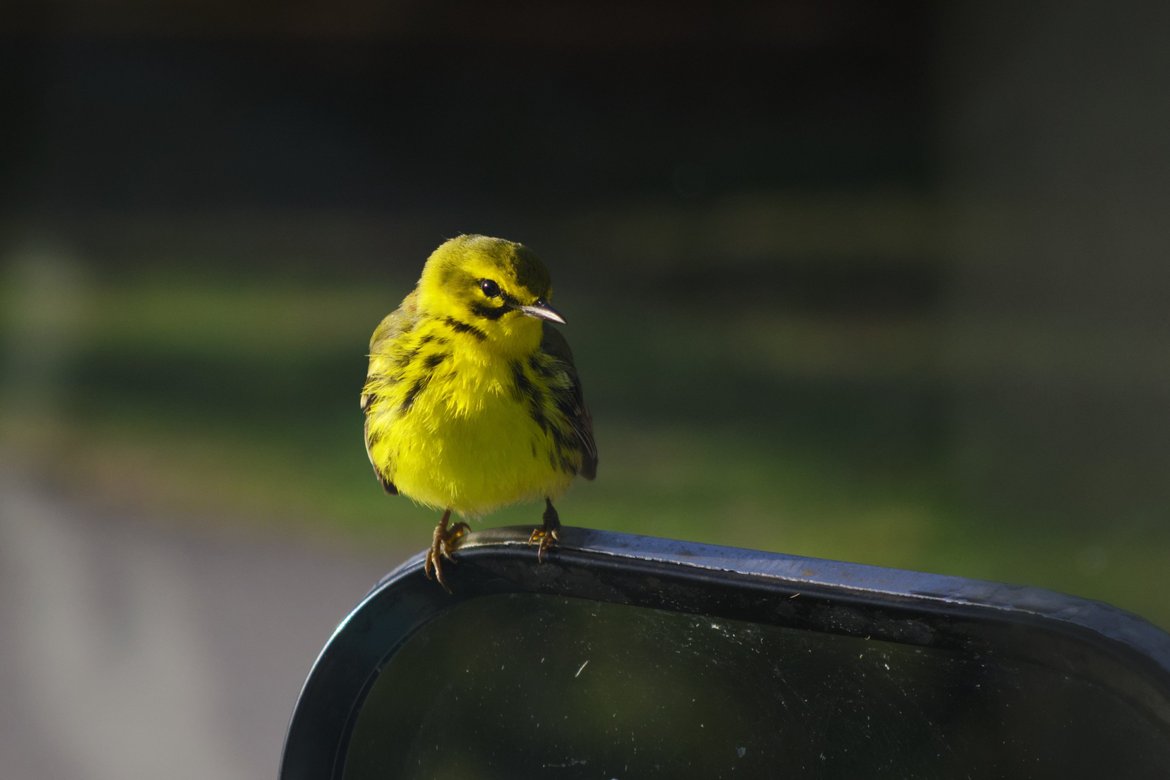
How I came to write a story about the bus for Wired is something of a story in itself.
I don’t recall how it came about, but a few years ago some enterprising person at Wired put together a mentoring system, which connected those of us with less experience with more experienced writers and editors. Now, my current title at Wired is “senior writer”, but I signed up to be mentored because this seemed like a good opportunity to learn.
People sometimes ask me for advice about becoming a writer and I always tell them, find something useful to do for money and keep writing in your spare time. Making a living writing is very difficult. Most people I know who have succeed have had some way to get through the lean years — either they come from money, have a significant other who makes makes enough to support them, or were prepared to live on lentils and rice and beans for a very, very long time. I went the latter route. I hate lentils.
I was fascinated by the early internet and started putting together websites in my spare time way back in 1996-1997. By 2000, the height of the dot-com bubble, I was pretty good at it, such as it was back then. I was still working restaurants to pay the bills, but I had a nice side income building websites. Meanwhile, a friend became a writer, and later editor, for Webmonkey.com, which was the place to go if you wanted to learn how to build websites on the early internet. It was a collection of tutorials mostly written by the developers working on Wired’s website, which was then called Hot Wired.
By coincidence in about 2002 I met up with him and his wife in New York. Despite me living in Georgia and them living in San Francisco, somehow we were all in New York at the same time (we’ve also met up in Paris and San Miguel de Allende by coincidence). I remember telling him that I’d just been rejected by a bunch of graduate writing programs and he said something like, meh, that’s for the best, pitch me a tutorial about web development, I’ll get you a little money, and then see how much you care about grad school.
So I did. And he rejected my first pitch. Hilarious.
Even when you have an in, you don’t always get the story.
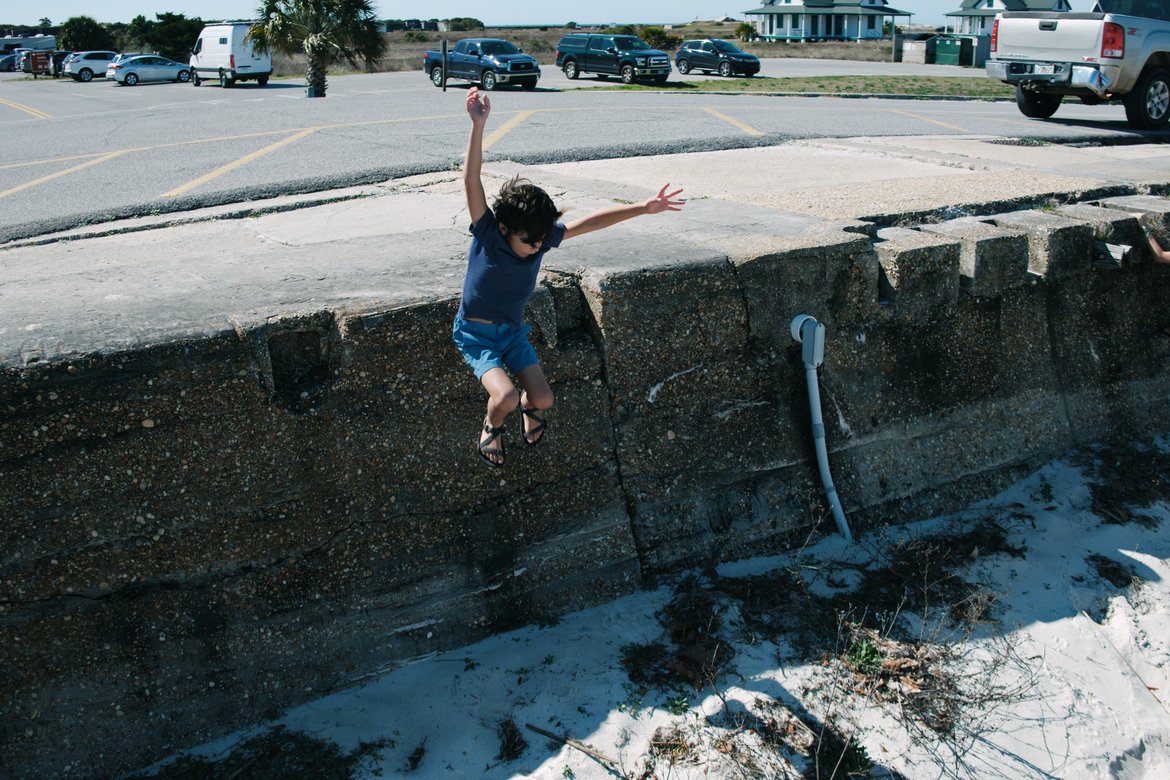
But he took my second pitch. And the third. I was still working my day job running a restaurant kitchen, but it wasn’t long before I was making more money writing than I was in the kitchen or building websites. Don’t worry, that didn’t last long. Luckily for me, I liked cooking and I didn’t quit that job because eventually economic times changed and the tutorial money dried up. Not entirely, but it wasn’t nearly as good or frequent. Eventually Wired sold Webmonkey and my friend went on to other things.
I’d been saving every penny I could for several years though, and so I did finally did quit the restaurant. Rather than getting serious about writing though, I took my savings and went traveling around Southeast Asia and Europe for a year.
Writing for Webmonkey did open quite a few doors, but mostly they led to programming jobs, not a ton, but enough to extend my trip in Southeast Asia. I’d go travel around Thailand, Laos, and Cambodia, periodically returning to Bangkok to work and earn some more money. Then I’d go out again. I ended up worked freelance this way for about three years, some of it traveling, some of it back in Athens, GA.
Around 2008 Wired re-acquired Webmonkey.com and relaunched it with my old editor now in charge. I went back to writing nearly full-time, though I was still technically freelance. That lasted for about five years. One day Wired got a new editor who decided he didn’t want Webmonkey anymore and shut it down. I went back to programming. About a year later is when we sold our house and left on this trip.
When we were in Mexico my primary client in my freelance business tragically passed away and the company he founded cut me loose. I had put all my eggs in one basket (classic small business mistake, don’t do it, no matter how good that client is, don’t do it) and I had to scramble to find work. One day Corrinne noticed a full time position at Wired. I still did the occasional freelance review and enjoyed it so I applied. I also applied for a job elsewhere as a documentation writer, but I was tired of writing about technical subjects. I didn’t want to tell people how to make things on the web. I didn’t want to write about software anymore. Moving from Webmonkey to Wired would, theoretically, give me a chance to write about other things.
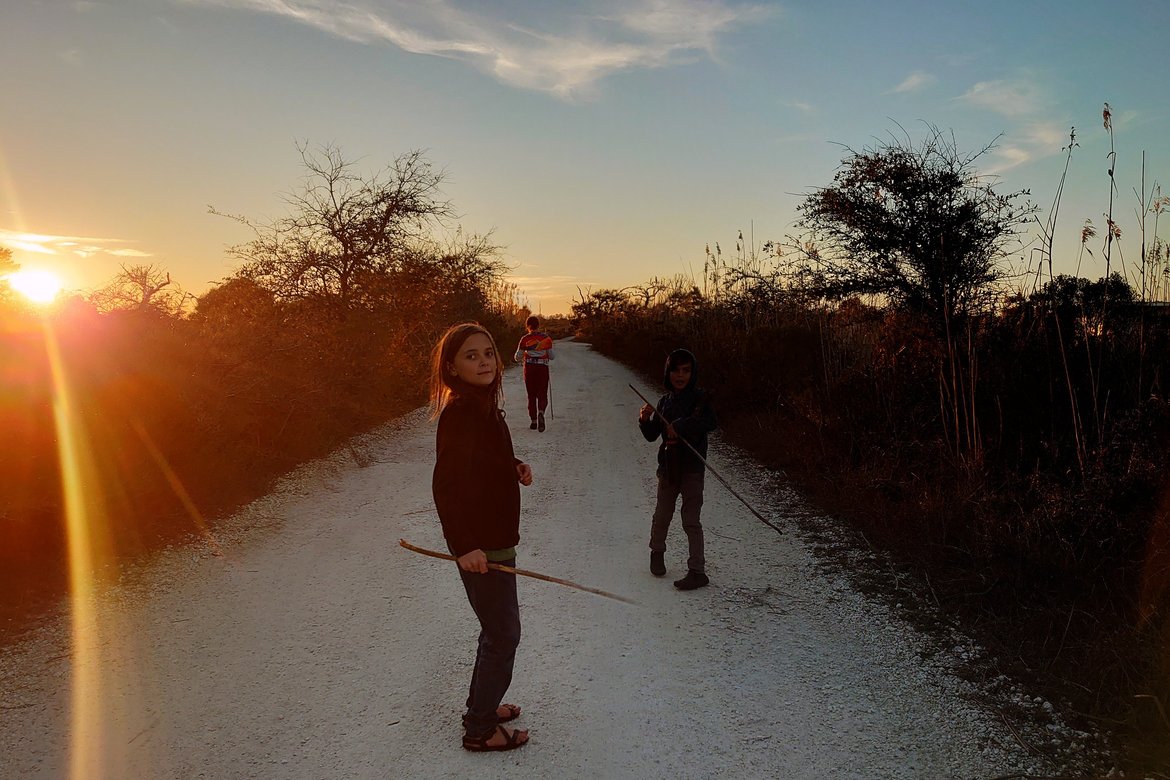
That is how I ended up a product reviewer for Wired. Note the total absence of journalistic experience in that story. So when the mentorship opportunity came up, I jumped on it. I was extremely lucky to get paired with someone from a very different part of Wired, who primarily worked on long, involved pieces called feature stories. This is what you probably think of when you think of reading a story in a magazine.
I told that editor that I’d always wanted to write a feature. She very kindly started coaching me. This was right around the time we moved to the house in Iva and, despite being stationary for the first time in years, our internet was worse than ever. I decided I should write about rural internet and how bad it is. I called experts. I got lots of quotes.
But then I started paying more attention to my neighbors out there in the woods. They didn’t seem to be hurting for internet. Sure it wasn’t great, but what use was the online world anyway? There was livestock to feed, fields to plow, work to be done. I came to believe that whole notion that rural America needs better internet is a story people in cities tell themselves because it’s what they would want if they were out here. It’s not what the people out here want. Rural America does not need further dependence on the complex systems that are already failing all around us. Rural America needs investment in localized systems and resources for local entrepreneurs. The internet is good enough.
I had to come back to my mentor and say, you know what, this isn’t the story for me. She was very gracious about it and kept meeting with me. The mentorship was supposed to last six months, but a year later we were still talking once a week. Somewhere in that time I started telling her stories about living in the bus, and she said, you know, you should write one of these stories down, but tell it in such a way that Wired readers will get something out of it. I ended up wrapping a story of how I came to love working on engines around the larger culture of repair.
Now, almost three years after we started talking, that story is going to be in the May issue of Wired. At least that’s the plan, you never really know until the ink is dry. I do know that it’s real enough that Wired paid a professional photographer from Houston to come hang out and take pictures of the bus for a few days. The photographer they sent was very nice and made something we were all dreading not that bad in the end.
That’s the story of the story. Of course the photo shoot was only one weekend out of nearly two weeks we spent at Fort Pickens. We had plenty of beach time and even discovered a spot we could get away from everyone and play baseball in the cool of the evenings.
I still worry that this story may bring unwanted attention to us, but we already get quite a bit of attention, I can’t see one story adding too much. Hopefully. While it’s about the bus, and me to some degree, it’s really more of a ode to the dying culture of repair, the DIY spirit, and the love of sturdy old things that so many people I’ve met over the years share with me. For me at least, it’s about everyone else. We’ll see what the rest of world thinks in a couple of months.


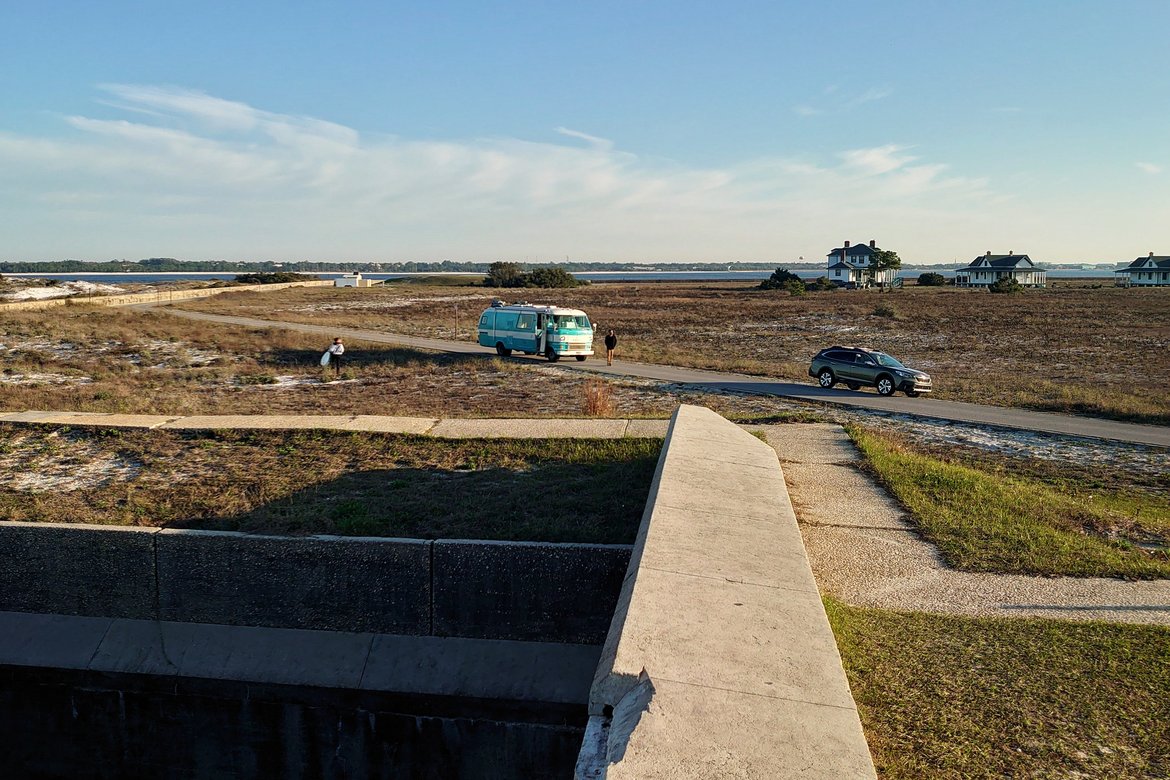
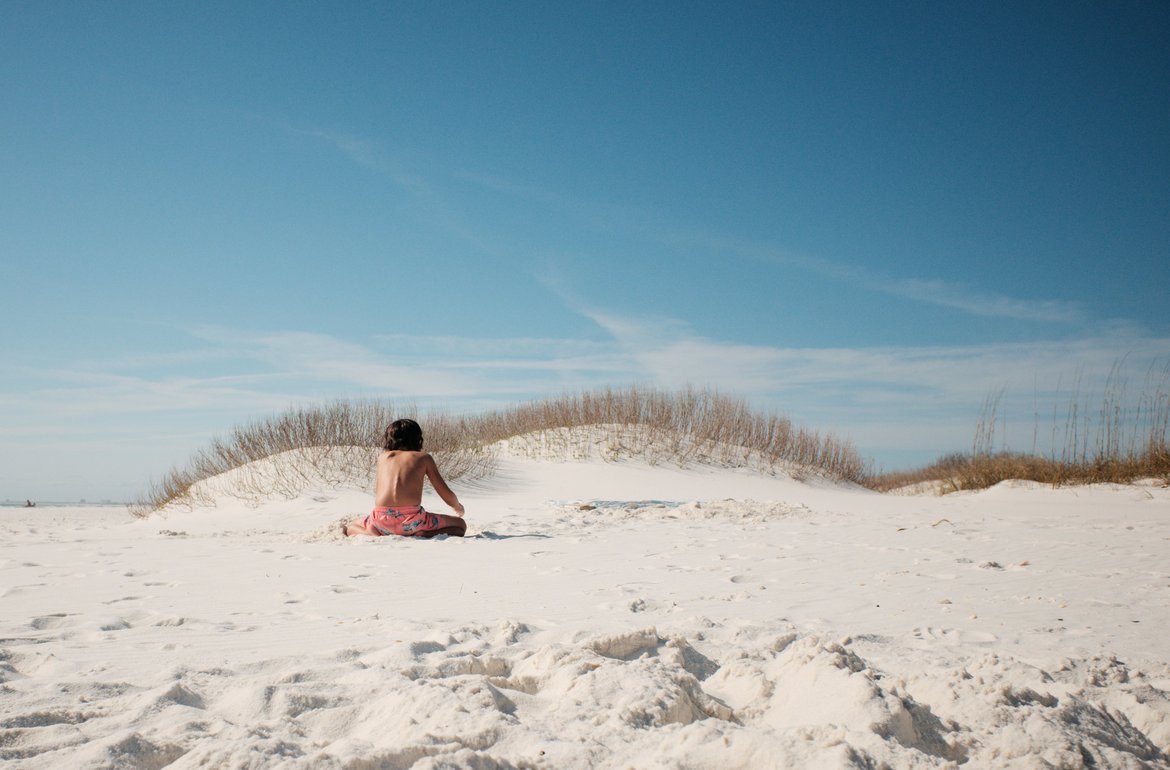


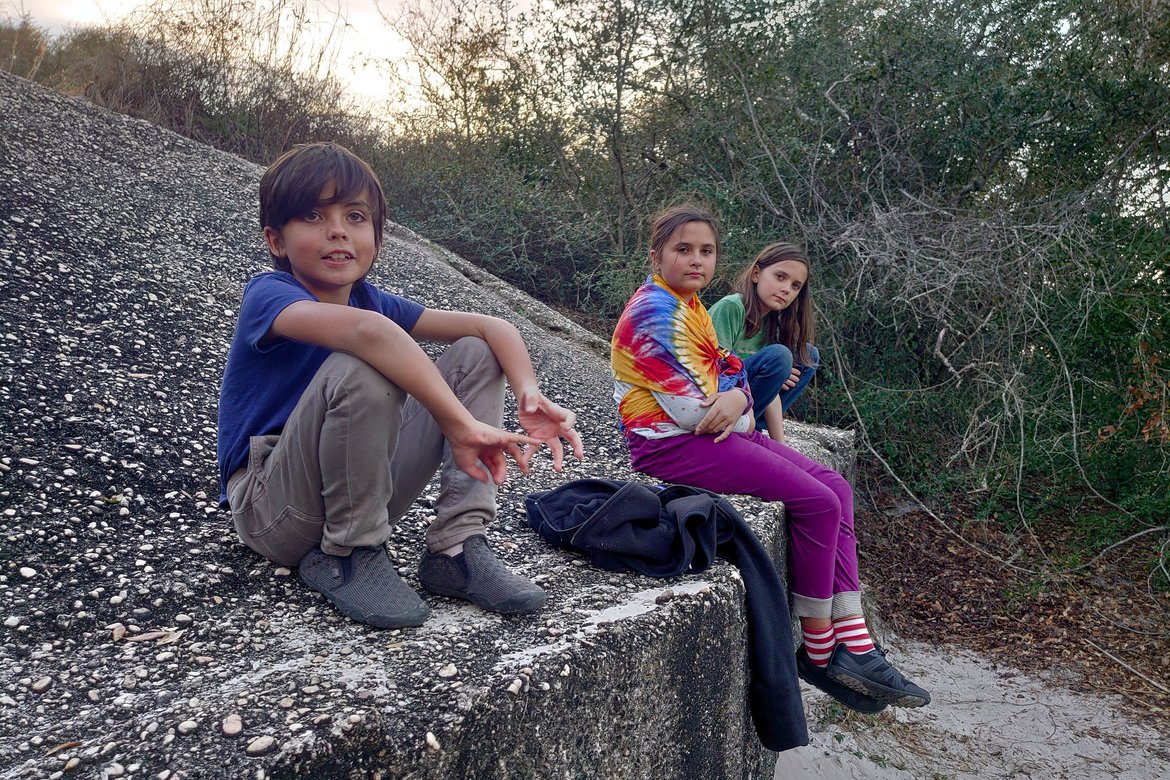
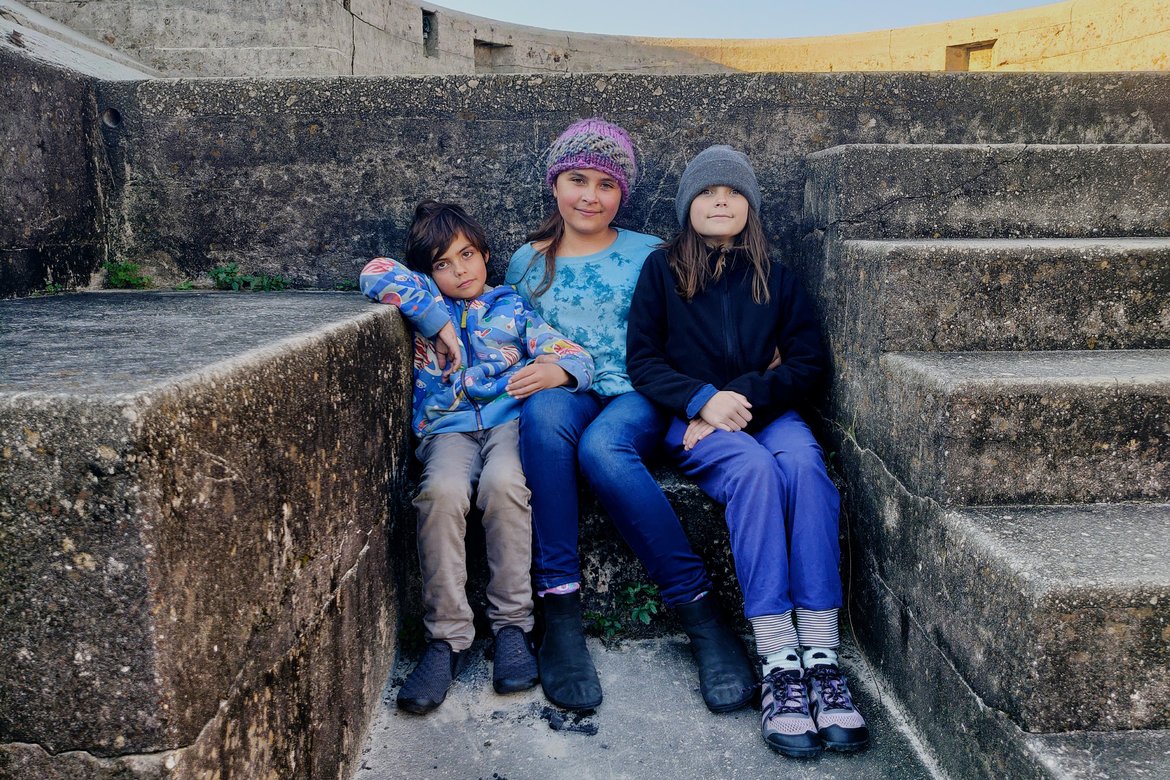
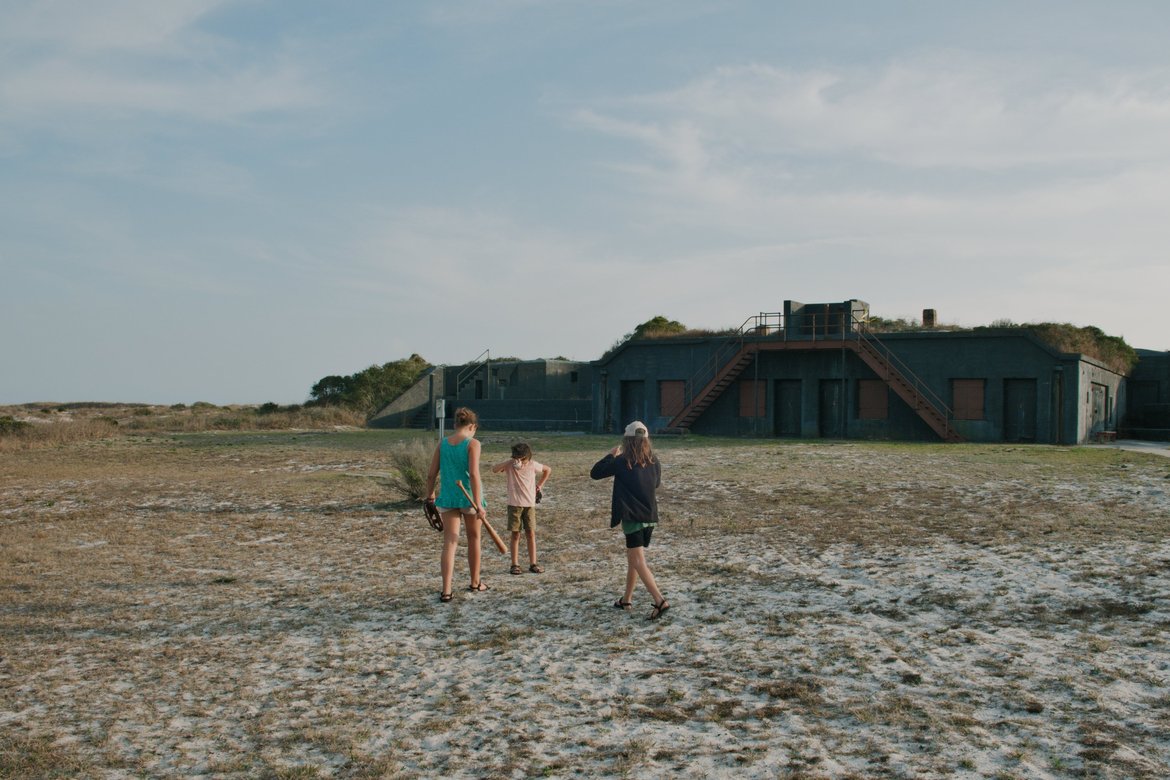
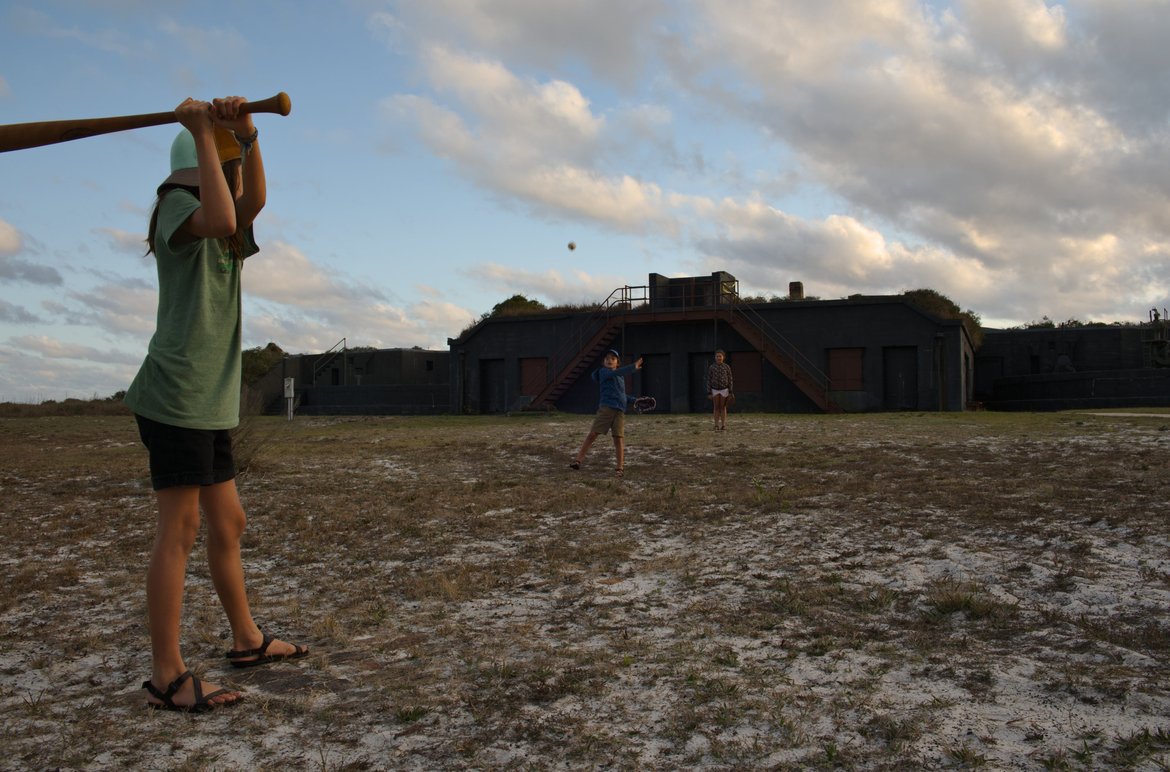

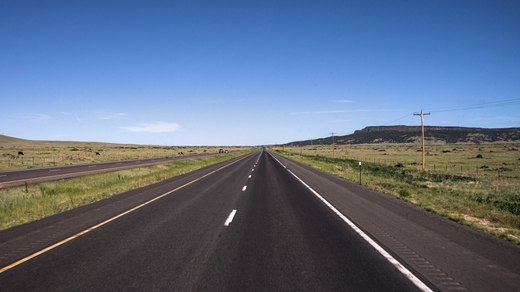

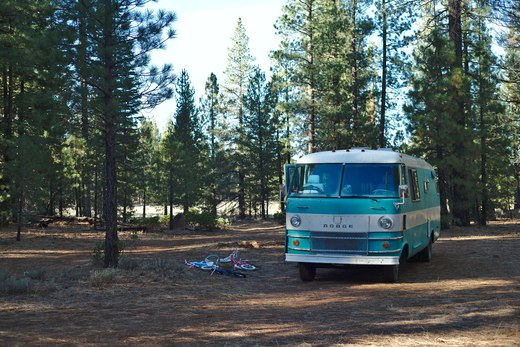
6 Comments
Best baseball field in America!
I like to think we are not the first people to play on it — lot of bored soldiers out here over the years — we’re just carrying the tradition on.
Well, it’s for real, now. I really enjoyed the story and made my way over here. May it bring all the positives you anticipate and none of the negatives you fear.
Carl-
Thanks for stopping by, glad you liked the article. It has mostly been positive feedback, which has been really wonderful. Lots of very nice people sharing all their stories of overheating in old cars. Except for one guy, he’s convinced we’re all going to die. But there’s always that one guy, I don’t let them bother me too much.
I just read your article in Wired and as a native South Dakotan I was left wondering why your RV has SD license plates (Sioux Falls, if they haven’t changed the numbering system since I was a kid), but you never mention SD in the article.
Marc-
Thanks for stopping by. While SD is our state of residency that’s mostly because it makes it easy to be a resident. You just have to spend a night in the state every couple of years and you’re all set. A lot of full time travelers use SD (Texas, Florida, and Nevada are other options).
That said, we love South Dakota and we had a great time there a few years ago:
https://luxagraf.net/jrnl/2018/08/wall-drug https://luxagraf.net/jrnl/2018/08/range-life
I’m sure we’ll be back soon.
Thoughts?
Please leave a reply:
All comments are moderated, so you won’t see it right away. And please remember Kurt Vonnegut's rule: “god damn it, you’ve got to be kind.” You can use Markdown or HTML to format your comments. The allowed tags are
<b>, <i>, <em>, <strong>, <a>. To create a new paragraph hit return twice.